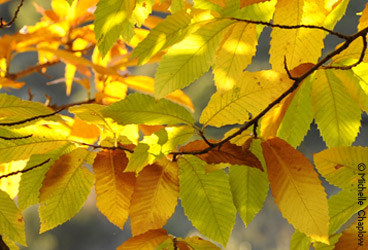
Parauta
Though only a small village of less than 220 inhabitants, Parauta’s municipal district of 44 square kilometres stretches from the wooded Alto Genal valley and deep into the rugged limestone Sierra de las Nieves Natural Park. As at Igualeja, the traveller would hardly notice they are passing through the district, unless they stopped at the service station on the San Pedro-Ronda road. The petrol station is a good point of reference, as it is from here that the Cartajima road leads off into the Alto Genal valley.
The pueblo is signposted off the main A-376 Ronda to San Pedro road, very near the petrol station. Parauta sits at the head of one of the Rio Genal’s tributaries and having driven through some rugged limestone country visitors encounter a further junction. This is a good spot to stop and look down at the village, with its two plazas and three fountains. Situated on a small plateau, the oldest part is located around the church on the higher ground. It is hard to contemplate that this community has lost eight per cent of its population in the past 150 years and that the 220 inhabitants left must be rattling around inside the village.
The separate three kilometre side road down the hillside terminates in the village. Before entering the village, you will note the cemetery on the right and the football pitch below. Parking should always be attempted earlier rather than sooner, as the medieval street pattern did not anticipate the concept of the motorised wheel. The first stop is the district around the church and its plaza.
The parish church of Iglesia de la Purisima Conception can be found at the side of the square, overlooking the campo. It was founded in the 16 th century, though remodelled 200 years later. It is modelled on a cross, with a central low tower in the centre of the church. This supports an interior gothic/mudejar style ceiling. A simple bell tower is adjacent to the entrance. Inside there are various images from the 18 th century including a statue to San Pascular Bailon, which was copied from one in Malaga Cathedral. A second image represents the Dolorosa.
From the Plaza, an interesting arch crosses the street to Calle Altillo . This is one of the few Moorish relics in the pueblo and probably marked the original entrance into the medieval village. At the end of the pueblo, an old oak tree can be found known as the Encinas Valdecilla . Its is three metres in diameter and 20 metres high and is locally known as the mother of all trees because of its age. From this advantage point on the edge of the village, the old road leading to Cartajima can be seen and the deserted village of Benahazin, which was located in the area of Cortijo del Manchon . This also leads down to the bottom of the municipal district where a cross has been dedicated to the horse chestnut trees that are such a valuable source of wealth.
On the border with Igualeja is a spring, which feeds into the Rio Nacimento. This is another spring that feeds the Rio Genal, though Igualeja takes the claim that it is the true source of the river. This powerful flow of water fed the Molino de Real, one of the mills that provided power to the royal foundry industry that flourished in this region during the 18 th century (see Juzcar). A local history guide mentions Molino Maquinas, now lost, which could have been in the same area.
Enchanted Forest trail
Diego Guerrero, a local artist, is the artistic creator who has transformed the surrounding forest into a fairytale setting. Using wood carvings, he has brought elves, fairies and fantastical characters to life, amazing children and adults alike. The Enchanted Forest hiking trail opened in the summer of 2022. Measuring approximately two kilometres in length, it follows a route from the village down into the Genal river valley and back again. The forest is filled with wood carvings of gnomes, butterflies, fairies and flying horses along the way. Guerrero creates the sculptures in winter, between November and February, when the trees have 'dead sap' and are not suffering. Afterwards, he applies a healing treatment to ensure their preservation.
Restaurants
Anafe Restaurant has a popular terrace, especially at weekend lunchtimes on sunny winter days. The menu features venison with chestnuts, wild boar with mushroom sauce and the traditional Serranía de Ronda dish comprising chorizo, blood sausage, peppers and a fried egg.
history of Parauta
As with the other villages in the Alto Genal, the village is of Moorish origins and was known as Hins Auta during the Arabic period. In conjunction with Cenay Pujerra, this pueblo may have been another Visigothic enclave after the Moorish invasion of Spain in 711AD. The Moslem invaders tolerated Christianity and the two religions at first lived side by side. More >
